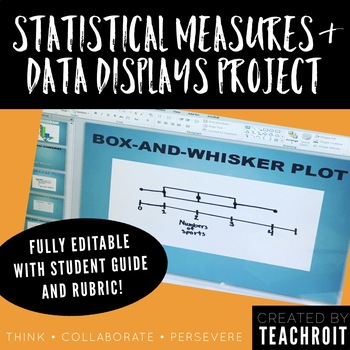Statistics & Data Display Project for 6th Grade Math PBL (Fully Editable)
- Zip
What educators are saying
Description
This product includes a student guide for a 6th grade middle school mathematics project that will require students to develop a statistical question, conduct a survey with their classmates, create numerical summaries, represent their findings using visual data displays, and finally present their findings!
The thorough student guide provides step by step directions for each part of the project and could be used as either an in class project or to be assigned as homework. The student guide also includes a 10 day project timeline to keep students on track for completing the project day by day.
In the .Zip file, you will also receive a one page rubric for grading the final products produced by your students. Again, all documents are also included as .docx files so you can fully edit the contents of this great Project Based Learning (PBL) opportunity for your students!


